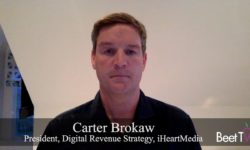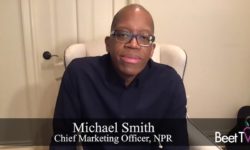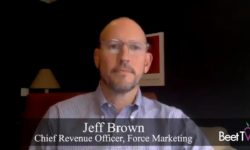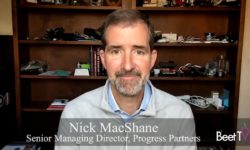In the last couple of years, most of the noise about digital ad targeting has been made at the intersection of two channels – video and mobile.
But the growth in streaming audio consumption, coupled with the capabilities it affords, is drawing new advertiser interest, reinvigorating an old format.
In this video interview with Beet.TV, David Wiesenfeld, Tru Optik Chief Strategist, explains how the audio boom is growing louder.
Return to radio heyday
“Streaming audio is kind of returning radio to the living room,” he says. “It’s become kind of a central part of that new, connected home entertainment nexus that includes connected TV, in-home gaming.
“The number of hours a day people listen to this, now, is two to three hours a day, on average. You’re almost seeing like what we might’ve seen in the 1930s, when the big old radio is at the centre of the living room and everybody crowded around it.
“Audio is returning to the home, somewhat surprisingly. Almost ironically, it’s thanks to these new, advanced types of digital devices.
The ad opportunity
In the last few years, we have seen the audio ad opportunity emerge around:
- Music, in ad-supported jukebox services like Spotify.
- Podcasts, with dynamic ad insertion upgrades in some some platforms.
Spotify, which operates both, made €185 million from advertising in Q3 2020 alone.
Listen Up: Kegelman’s Spotify Puts Multi-Platform User Data To Work For Advertisers
OTT is largely a replacement for television. People watch it on the same screen, in the same places, for the most part, and they watch similar kinds of content.
(But) streaming audio, it’s not just a digital make-over of audio, it’s more than that – it’s really taking an advantage of the portability of different connected devices … to allow consumers to be able to listen to audio in ways that sort of just complement whatever they’re doing.
Consumption is coming from a range of devices:
- Smartphones on the go.
- In-home smart speakers.
- In-car systems.
According to Edison Research’s latest Smart Audio report, 24% of US adults are now reached by smart speakers, with consumption reported up thanks to the pandemic.
Refined targeting
Tru Optik is amongst the companies aiming to help advertisers and publishers profit from this growth. It has trained its audience graph, built in connected TV, toward streaming audio.
Wiesenfeld explains capabilities in streaming audio environments include advanced targeting beyond traditional daypart and contextual placements.
“You can actually target based on who the listeners are and attributes around them,” he says.
“Advertisers can target very specifically based on a particular user’s political interests… which we’ve seen has become very popular in the last couple of months… to things like what products they buy at the supermarket (and) are they in the market for a car or not?”
Want to learn more about digital audio & podcast growth & trends, & how to leverage Triton & @TruOptik powerful platforms to target audio ads across more than 80M US households? View the replay of the webinar here: https://t.co/fcxytMSGgz
— Triton Digital (@TritonDigital) November 20, 2020
Efficiency drive
But Wiesenfeld says streaming audio ads are still largely bought the way display and many video ads used to be, leaving plenty of room for efficiencies.
“Most audio content, audio inventory, is bought direct. it’s about 80% or so,” he says.
“So there’s just a huge opportunity where almost none of that is being sold on an audience addressable basis.
“The technology is there, the systems are there, the pipes are all built, and is just waiting for some of these audio publishers to grab at that. And just whoever gets there first, I think, is going to be really happy with the level of interest that they see from from buyers.”
You are watching “Advertisers: Turn Up the Volume on Streaming Audio,” a Beet.TV leadership video series presented by Tru Optik. For more videos, please visit this page.





































